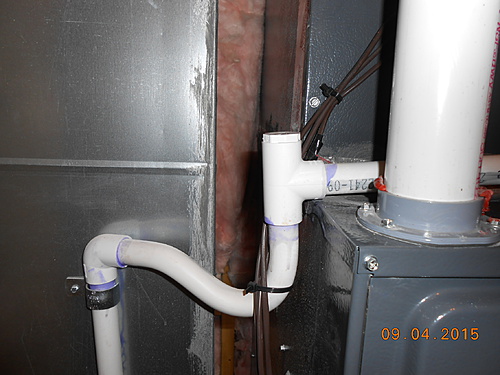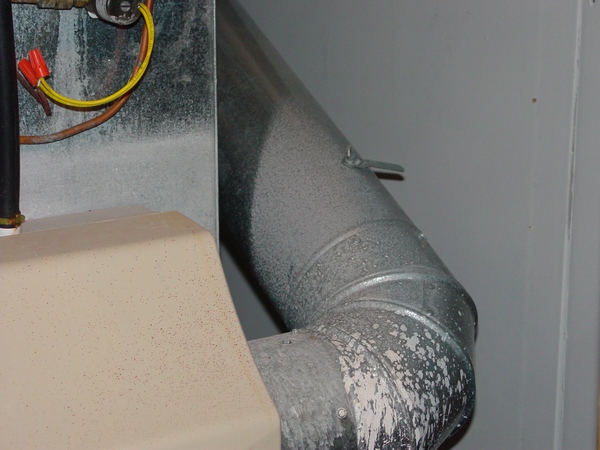|
|
|
How to Save Energy on Humidifier
For buildings with a forced-air furnace, a humidifier may be built right into the furnace. They can also protect wooden objects, antiques and other furnishings which may be sensitive to damage from overly dry air. In colder months, they may provide substantial energy savings, since as humidity increases, occupants feel warm at a lower temperature. These units are typically called bypass humidifiers (because they are connected between the heated and cold air return ducts, using the pressure difference between these ducts to cause some heated air to make a bypass through the humidifier and return to the furnace). The humidifier should usually be disabled during the summer months if air conditioning is used; air conditioners partially function by reducing indoor humidity. There are three basic styles:
Drum style: A pipe brings water directly to a reservoir (a pan) attached to the furnace. The level of water in the pan is controlled by a float valve, similar to a small toilet tank float. The wick is typically a foam pad mounted on a drum and attached to a small motor; hot air enters the drum at one end and is forced to leave through the sides of the drum. When the hygrostat calls for humidity, the motor is turned on causing the drum to rotate slowly through the pan of water and preventing the foam pad from drying out.
Advantages include:
- Low cost
- Inexpensive maintenance (drum-style pads are cheap and readily available)
Disadvantages include:
- Requirement for frequent (approximately monthly) inspections of cleanliness and pad condition
- Water evaporation even when humidification is not required (due to the pan of water which remains exposed to a high velocity air stream)
- Mold growth in the pan full of water (this problem is exacerbated by the large quantity of air, inevitably carrying mold spores, passing through the humidifier whether in use or not).
For the latter reason especially, drum-style humidifiers should always be turned off at the water supply during summer (air conditioning) months, and should always be used with high quality furnace air filters (MERV ratings as high as possible to ensure small numbers of mold spores reaching the humidifier's pan) when the water supply is turned on.
Disc Wheel Style: Very similar in design to the drum style humidifiers, this type of furnace humidifier replaces the foam drum with a number of plastic discs with small grooves on both sides. This allows for a very large evaporative surface area, without requiring a great deal of space. Unlike the drum style humidifiers, the disc wheel does not need replacing.
Advantages include:
- Very low maintenance (basin of humidifier should be cleaned out periodically, unless automatic flushing device is installed)
- No regular replacement of parts necessary
- Higher output due to large evaporative surface area
- Can be installed in hard water situations
- Maintains efficiency throughout lifespan
Disadvantages include:
- Higher price
- Water evaporation even when humidification is not required (due to the pan of water which remains exposed to a high velocity air stream)
Flow-Through Style (also known as "biscuit style" or many other, similar variant names): A pipe brings water directly to an electrically-controlled valve at the top of the humidifier. Air passes through an aluminum "biscuit" (often called a pad; using the term "biscuit" to emphasize the solid rather than foamy form) which is similar to a piece of extremely coarse steel wool. The biscuit has a coating of a matte ceramic, resulting in an extremely large surface area within a small space. When the hygrostat calls for humidity, the valve is opened and causes a spray of water onto the biscuit. Hot air is passed through the biscuit, causing the water to evaporate from the pad and be carried into the building.
Advantages include:
- Reduced maintenance (new biscuit only when clogged with dust or mineral deposits, typically once per year)
- Lack of a pan of potentially stagnant water to serve as a breeding ground for mold as with a drum-style humidifier
- No incidental humidification caused by a constantly-replenished pan of water in a high velocity air stream
- Reduced requirement for expensive air filters
- Uses no electricity
Disadvantages include:
- A somewhat higher purchase price
- Manufacturer and model-specific replacement biscuits versus the relatively generic drum-style pads
- A portion of the water supplied to the unit is not evaporated. This can generate a considerable amount of waste water, and does require connection to a drain
 I am planning to install a bypass humidifier onto my furnace duct work before next winter. It requires a drain hose because it has excess water flow. I am thinking on running it into the condensate drain from the A/C unit. See photo. The cap on the top of the Tee just lifts off (for clean out I'm sure). When I take the cap off, air blows out the top. If I stick the humidifier drain hose down into the top of the tee, do I need to seal (not permanently) it off with something? I am planning to install a bypass humidifier onto my furnace duct work before next winter. It requires a drain hose because it has excess water flow. I am thinking on running it into the condensate drain from the A/C unit. See photo. The cap on the top of the Tee just lifts off (for clean out I'm sure). When I take the cap off, air blows out the top. If I stick the humidifier drain hose down into the top of the tee, do I need to seal (not permanently) it off with something?
Put a short piece of PVC pipe in the top of the tee, and then put the drain hose for the humidifier in it.
You don't want the humidifier's drain hose sticking past the tee where the A/C line is. It can clog easier if it does.
It is best if you seal around the hose then. But if its in a conditioned space, it doesn't need to be sealed.
After a lot of years bacteria builds up in the furnace drain line and it can slow down. Especially if it is a soft hose. That is why we have to remove and flush the condensate trap on some brands. Don't want to create your own problem.
If you can keep them separate that is better but combining them happens a lot too. What you don't want is the AC draining in higher than the furnace on the same pipe. If the drain plugs after the furnace then the AC can fill up the furnace heat exchanger with water and damage it. We always tee in the AC to the side of the furnace if it is using the same pipe and leave a open tee so it can spill out.
|
|
How to Save Energy on Your Humidifier
If you have a Flow-Through Style humidifier as I do you may also save some energy and money!
When someone is telling you that you can save energy by sealing your ductwork picture a Flow-Through humidifier as a 6” pipe directly connected from the plenum to the cold air return duct. In other words, you have two big 6” holes in the supply and return connected together. That means that pretty big part of the airflow do not participate in the conditioning of your house but just coming back to the furnace. Of course, it helps to heat up the return air, but because it is stealing air from the living area, it increases the furnace cycle! However, what can you do? You need that humidifier running!
 Of course, you do, but only when outside temperature is below 32 degrees F! Of course, you do, but only when outside temperature is below 32 degrees F!
It is OK if humidity in your house is hovering around 40%, if you have hardwood floor - 40% - 50%. Buy a humidity meter and shut the humidifier off when the inside humidity is high enough.
In the summertime I am not only turn the damper off, I even put a piece of cardboard to block off the pad.
HUMIDIFIER INSTALLATION
If you would like to read more, please use the “BuyNow” button below and you will gain an in instant access to the seventh chapter of my Energy Saving Book book dedicated to the energy conservation issues!
In the chapter, you will learn how to save energy by using your humidifier the right way, how to install a humidifier by yourself and save on installation, or how to add the second one if you do not have enough humidity in your house.
The chapter has 8 pages and 19 pictures in it. Price of the chapter is only $2.50.
Instant Access:
After you have purchased a paid page, PayPal is going to bring you back to my website. In order to see the paid page you have to click on the “Register” button, fill out the form, choose your own Username and Password, and click on the “Register” button at the bottom of the form – congratulation, you are now on the page you have paid for!
Important: After you have purchased any Paid page or Download page and PayPal brought you back to my website, the first thing that you should do is to save that page to your Favorites. Then if something goes wrong you always can come back to re-register yourself on my website again.
|
|
How to Double Level of Relative Humidity in Your House
Low humidity level is most likely the cause of some pretty significant health issues. The optimal relative humidity level for human comfort and health is anywhere from 30% to 50%.
Here are some of the results of low humidity:
- Severe static electricity resulting in powerful shocks
- Furniture dries out and cracks, hardwood floor cracks and buckle....
Please read more on this page.
|
Humidifier, Dehumidifier
01. Honeywell TrueSTEAM™ Humidifier Is Easy To Install
02. Honeywell TrueSTEAM Humidifier
03. Aprilaire Models 500/600 Bypass Humidifier
04. Humidifying Your Home
05. Why You Need a Furnace Humidifier
06. Whole House Humidifier Troubleshooting
07. Do-It-Yourself Humidifier Maintains
08. How to Replace Your Whole House Humidifier Water Panel
09. How a Humidifier Work
10. Whole-house Humidification System
11. TrueDRY DH65 Whole House Dehumidifier
12. Dry Basement & Crawl Space SaniDry Dehumidifier
13. Santa Fe Compact Dehumidifier - Video Tour
14. Dri-Eaz Drizair 1200 Dehumidifier
15. Dehumidifiers Buying Guide
16. Danby 70/50 Pint Dehumidifiers
|
|
|
A website "ductworkinstallation. com" focus on providing information and services related to the installation of ductwork systems , which are the tubes used to distribute heated or cooled air throughout a building as part of an HVAC system; essentially, it would be a platform for individuals or companies specializing in designing and installing ductwork for homes and commercial properties, offering details on the process, and potential contractors to contact for such services.
Key points about ductwork installation websites:
Services offered:
New ductwork installation, ductwork repair, duct cleaning, duct sealing, airflow balancing.
Target audience:
Homeowners looking to install a new HVAC system, individuals experiencing issues with their existing ductwork, commercial property owners needing ductwork for large buildings.
Information provided:
Explanations on different types of duct materials, design considerations for optimal airflow, potential benefits of proper ductwork installation.
|
|